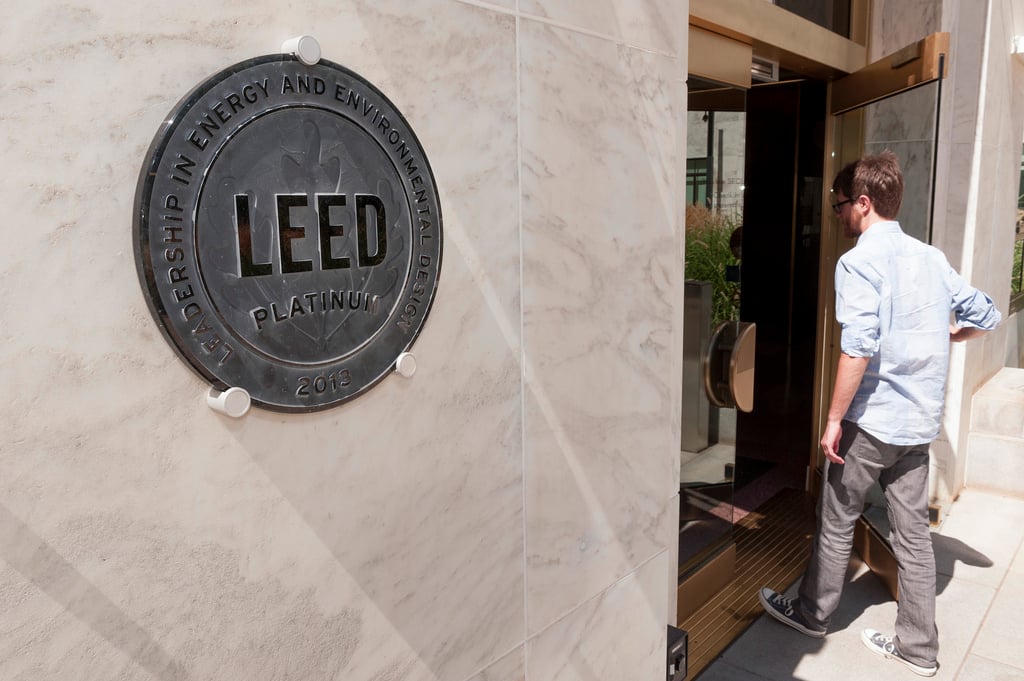Changes to LEED v4 – APPRO Architect Casie Radford Discusses Recent LEED Activity

LEED Building. Source: Oregon-DOT (Flickr)
LEED (Leadership in Energy and Environmental Design) has been the primary program for certifying the sustainability and “greenness” of buildings for the past 15 years. Now LEED v4 has come out and the focus on the building industry has been expanded to include the manufacturing industry, particularly as it relates to materials and resources. The focus and responsibility is not off the building and construction industry, but will trickle down the line to understand more clearly where and how materials (and the raw materials involved) are manufactured and with what they are manufactured. Sustainability reporting is no longer the exclusive responsibility of the building industry.
Manufacturers and materials suppliers will now have stronger motivation to complete life cycle assessments (LCA) or they could see a decline in demand, as the use of their products for more than just one LEED credit won’t be allowed. Best to take care of LCAs, EPDs, and HPDs (mentioned later), before the requirement goes into full effect and LCAs may be harder to complete in a timely or cost effective manner. Don’t worry though, projects can file under the previous version of LEED up until 2015.
One interesting factoid about the revised credits are that one LEED point can be obtained if a manufacturer of a building product discloses information related to environmental and health impacts – even if it is not environmentally friendly or healthy. I understand the importance of honesty here and also that “transparency drives improvement for business”, but what about the point of LEED in the first place. Isn’t there another way to promote safe materials? Why should a product be rewarded by being honest if not an otherwise LEED credit acceptable material?
Utilizing LCA as a tool to assess products is an important tool for evaluating the true energy and environmental impacts a product has. A new tool created for product assessment is the Environmental Product Declarations (EPD) which is a third-party verified LCA. This tool will enable a product to achieve additional points if the impacts to the environment are below industry averages. This goes to show that a peer review is never undervalued. Similar to the transparency point, you can still get one LEED point for just having an EPD.
Supply chain information, for certified wood for example, is often viewed as highly confidential. To achieve a credit for the responsible sourcing of all raw materials; however, manufacturers are required to report extraction locations and supplier commitments for 90% of a product’s raw materials. The aim for LEED is to reward those who already openly disclose and communicate with suppliers to avoid future issues.
LEED v4 will also address hazardous materials by requiring companies to declare every ingredient more than 0.1% (by weight). For declaration alone one LEED point can be achieved, while another point can be had by proving they are dodging hazardous materials as determined by the government. The Health Product Declaration (HPD) has been created as a format for reporting a product’s ingredients.
Have concerns about commercial or industrial building materials or manufacturers; or, want to know more about how LEED has an impact on your next building project? Contact the APPRO Design and Architecture team for more information HERE.

